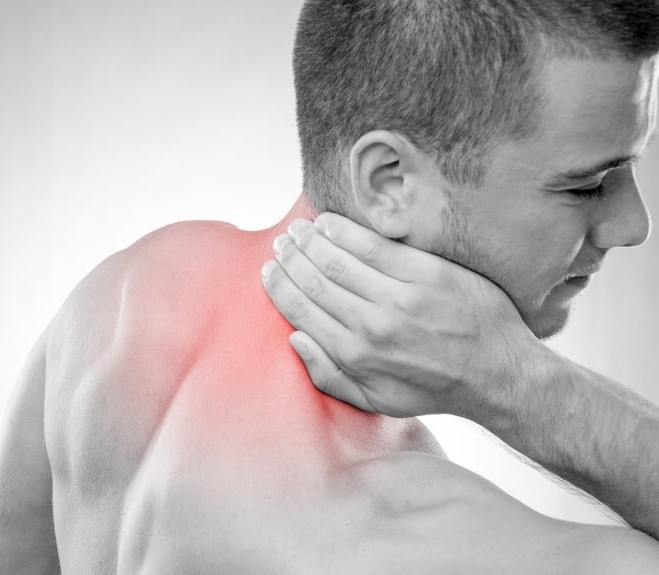Does a Sports Massage Hurt

I often have clients enquire about sports massage, and they assume that they will come away battered and bruised, and be subjected to lots of pain. Unfortunately some people still think that a sports massage will be a relaxing experience and so if they have a negative view due to unrealistic expectations, this can cause fear in others who simply want to be ‘pain free’. If I think about client reviews, certainly many have found sports massages uncomfortable, but there are reasons for this, and they also say that they feel better afterwards, which is the whole point. While my clients have experienced a ‘DOMS’ like aching the following day, they haven’t been visibly bruised. I will aim to explain why, when a client is coming for muscle tension and pain relief, they may experience some discomfort in the 24-48 hours following treatment.
DOES A SPORTS MASSAGE HURT?
• some discomfort during treatment is a realistic expectation
• the level of discomfort will be dependant on the clients honesty about how much pain they are experiencing. I always work up to an 8 out of 10 on the pain scale, with 10 being unbearable, altering the technique if a spot is particularly sensitive.
• Understanding a clients individual needs is essential, and I will make decisions based on their tissues and their feedback, as to whether they can handle more pressure etc. Sometimes I need to cause some extra discomfort in order to release a tissue, but there is constant communication with the client.
• Sports massage is a balancing act between applying insufficient pressure, which brings no improvement in the body’s structures, and too much pressure, which can cause further tension and additional symptoms. Observation of a client’s non-verbal communication eg.holding their breath to cope with pain, is one of the best cues for maintaining this balancing act.
• Each client is an individual whose body will respond differently to a treatment. It is a therapist’s job to read each individual body type and adjust speed, depth and direction of pressure, to present a therapeutic challenge to the tissues, and a therapeutic level of discomfort. Pain occurs when the tissues are resistant to change, so the therapist must find a way to release them using more persuasion than force.
• Consideration of environmental and biochemical factors should also be taken when assessing discomfort levels eg. diet, menstruation, stress may alter a clients perception of pain
BRUISING
In the first couple of days after a deep tissue sports massage you may feel bruised, even more so if this is your first sports massage treatment. This is due to lactic acid and stagnant blood being flushed out of the tissues and a fresh blood supply coming in. When stagnant blood and lymphatic fluid build up in muscle tissue it will make the muscle appear to be inflamed (a knot). When deep tissue massage breaks up these knots to disperse the waste products it causes breaks in the capillaries, hence why bruising may occur. Fresh blood can then flow into the tissues, oxygenating them and helping them to recover. This kind of bruising should only last a few days at most.
POST MASSAGE MUSCLE SORENESS
• will highlight weak spots that can be treated in subsequent sessions • soreness may last up to 48 hours - most clients will wake up the next day with some aches which will be determined by the treatment type and intensity, the body’s reaction and how well the ache is managed.
• post massage muscle ache is generally due to muscular restrictions being challenged, and resetting the muscle to its default. They will have been manipulated to break down adhesions, knots and holding patterns to restore the tissue to a functional state. If the problem is chronic it requires deeper work and will need time to repair the resulting micro tears afterwards. • Post massage muscle pain may only be detrimental if severe pain during treatment caused the client to tense up further.
• Massage for pain relief often involves regular sessions, but if a client only wants a single treatment then the therapist may use lighter pressure to relieve symptoms rather than challenge the muscle patterns.
• Healing pain patterns sometimes means that it will worsen before getting better, due to correcting muscle imbalances, introducing new ranges of motion, and breaking down scar tissue, which can cause various symptoms.
• The more sports massages a client has, the less post massage muscle soreness they will experience.
MANAGING POST MASSAGE MUSCLE SORENESS
• when we experience pain, our brain causes muscle guarding, where we subconsciously tensing muscles to protect the painful area, and this can reverse the benefits of the massage, potentially triggering a new pain cycle.
• hot baths with Epsom salts, avoiding exercise and maintaining hydration to assist with detoxification for the next 24 hours may help reduce post massage soreness. If you are slightly dehydrated, muscle tension can increase, causing a more painful massage experience.
• if pain continues, pain killers may interrupt the pain cycle, to allow the brain to relax muscles Always see a registered and qualified therapist, and tell them if you are prone to bruising.
